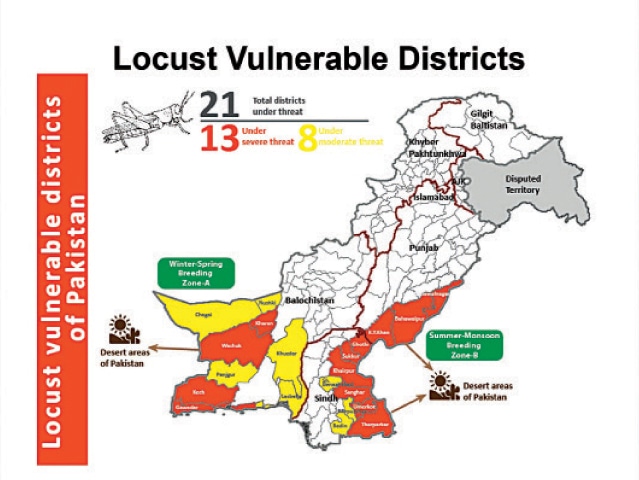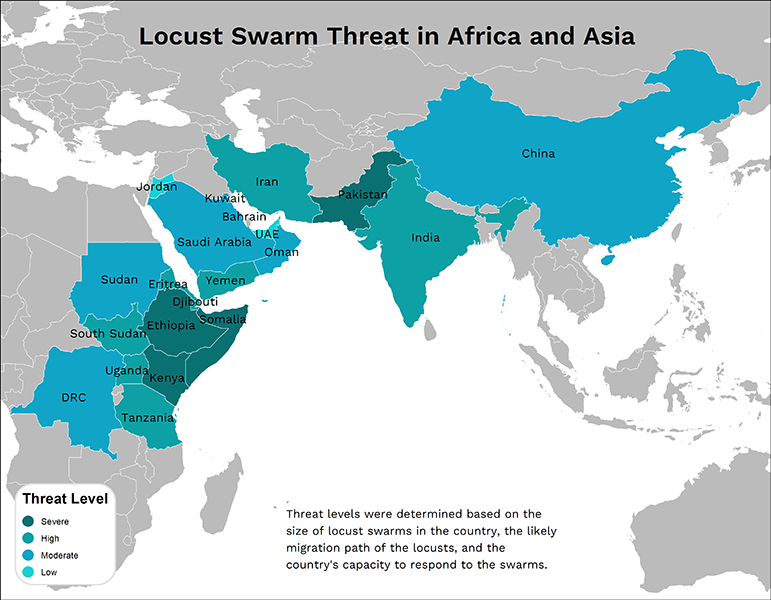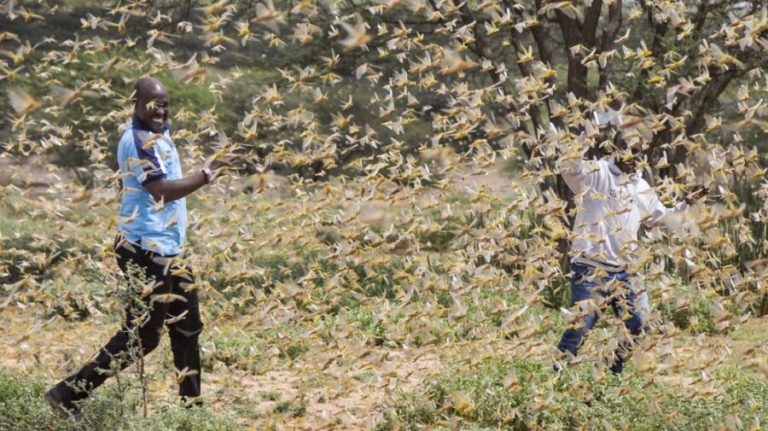The crop pest, locust, traditionally threatens food security of many countries in Africa and Asia. However, this year the problem has grown at such a rate that it might threaten the lives of tens of millions of people. The situation was caused by climatic conditions that create the prerequisites for the pest mass reproduction.
According to the World Bank, locust has inflicted damage on 23 states in East Africa, the Middle East and South Asia, the worst swarm in 70 years. Somalia’s losses by the end of the year can amount to $8.5 billion.
The problems that East Africa has faced we have already described in the article Food shortage risks in Africa-2020. The situation has not been resolved yet; farmers have lost crops and keep bearing losses. A new upsurge of the locust spread is expected in June-July. Ethiopia, Somalia, Kenya, Djibouti, Eritrea, Tanzania, Sudan, South Sudan and Uganda have been already affected and the problems will happen to be in future. In the meantime, the Gulf, Central and Central Asia region has become a new hotspot.
Locusts are damaging Pakistan and India the most. At the beginning of the year locusts have already invaded this region. As a result the crops were destroyed in the Indian province of Rajasthan where the locust arrived from Pakistan. Now India is facing the most devastating locust invasion in nearly 30 years. The insects have already destroyed crops on about 50,000 arable land hectares. Eight to ten swarms, a single one is about 1 square kilometer in size, are active in Rajasthan and Madhya Pradesh. It is worth noting that locusts have already blanketed other states in India, including Maharashtra and Uttar Pradesh. The reason is the same here, climatic conditions, mainly, heavy rains and cyclones in the Indian Ocean that increased the rate and scale of locust breeding this year.
The situation in Pakistan is critical too. The state losses from the locust invasion may amount to $2 billion. The first swarm flew in from the United Arab Emirates in mid-2019; the new one is expected from Iran in the next few weeks. In the UAE it there is also a record pest upsurge. UN food and agricultural security experts believe that the UAE’s locust breeding center is located in Al Ain, on the border with the Sultanate of Oman, and due to a strong wind they will travel long distances. In a while locusts from the UAE will start migrating to Pakistan and India that, in turn, will aggravate the problem and increase the number of swarms in the region. Yemen and Iran are on the line.

Locusts threaten food insecurity of the states in Central Asia. This year warm weather in the region caused an earlier Moroccan locust upsurge. Thus, locust spreads in Uzbekistan are expected to cover 597.9 thousand hectares in 2020. Since March, Tajikistan has been struggling with locusts in Afghanistan frontier zones. According to the data, in the last decade of May Kyrgyzstan is going to face locust mass reproduction with blanketed area of more than 120 thousand hectares. In 2020 herd and non-herd locust spread on the area of 824 thousand hectares is expected in Kazakhstan. As of the last decade of May Moroccan locust covered 143 thousand hectares of fields in the Turkestan and Zhambyl regions.

Harvest in southern Russia is also at risk. Moroccan locust migration was first spotted here in 2016. Because of the warm winter, a massive insect migration upsurge is expected this year. In the east of Stavropol locust activation began a month earlier than usual. It means that due to a new generation of locust there will be more insects. According to official data the locust laid eggs on the area of 10 thousand hectares. This year there are unfavorable weather conditions for crops in the Black Sea region, Russia. Locust activation is going to make farmers’ situation only worse. The Black Sea region in Ukraine, especially the Kherson Oblast, is also at risk.
Thus, most of the states in the region are not ready to face this threat. The Covid-19 pandemic and the economic consequences of social and economic restrictions hit national economies rather hard. A new disaster strengthens negative trends. It means that tens of millions of people may face the threat of famine. The World Bank approved a decision to allocate a record sum of money, $500 million, to fight the locust infestation in Africa and the Middle East. The financial assistance will be provided in the form of grants and loans at low interest rates. According to officials, four of the most affected by the locust invasion countries such as Djibouti, Ethiopia, Kenya and Uganda will receive $160 million immediately. However, taking into account the situation development the funds allocated may be more than not enough.
In many countries whose population risks to starve corruption can make the taken measures ineffective. It is still unclear what point food prices in the problem regions will reach, especially against the background of the world food trade restrictions. Economic losses in developing countries can be so significant that national governments will not be able to cope with them. Thus, in poor countries affected by the locusts, there is a high chance for attempts of regional and trans-regional migration upsurge, that will be neutralized by quarantine measures; massive social protests and even interethnic conflicts.




